
Xeriscape Ideas
Don't Kill that Tree
Don't Kill that Tree
Garden Tip
TB1273
TB1273
Technical Bulletin Series

|
Xeriscape Ideas Don't Kill that Tree |
Garden Tip TB1273 |
Technical Bulletin Series
|
|
The term Xeriscape (zer-á-scape) is relatively new and derived from the Greek
meaning dry, but the concept has actually been around a long time. When properly
planned, Xeriscape is a cost-effective method of landscaping to conserve water.
Let's do a little planning.
Reducing water consumption and cost through turf removal does not imply that your
yard will look desolate, or that it must become a dry and hot area.
Lawns are shallow rooted and therefore the water applied needs to be shallow and
rather quickly evaporates. This is the prime reason that grass is a major water consumer.
|
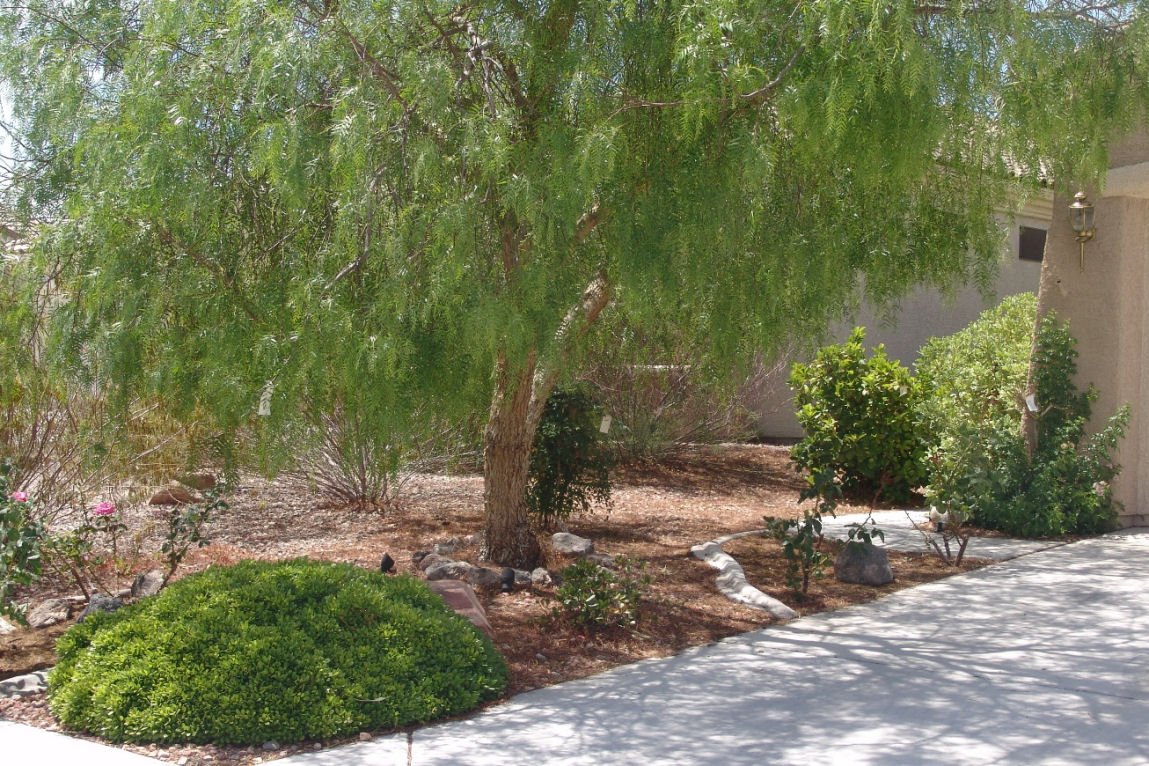
Keep that large beautiful shade tree and a few shrubs, and change the irrigation schedule to less often yet for more minutes. Allow the moisture to permeate deeply. |
|
Keeping some Turf still reduces water use! 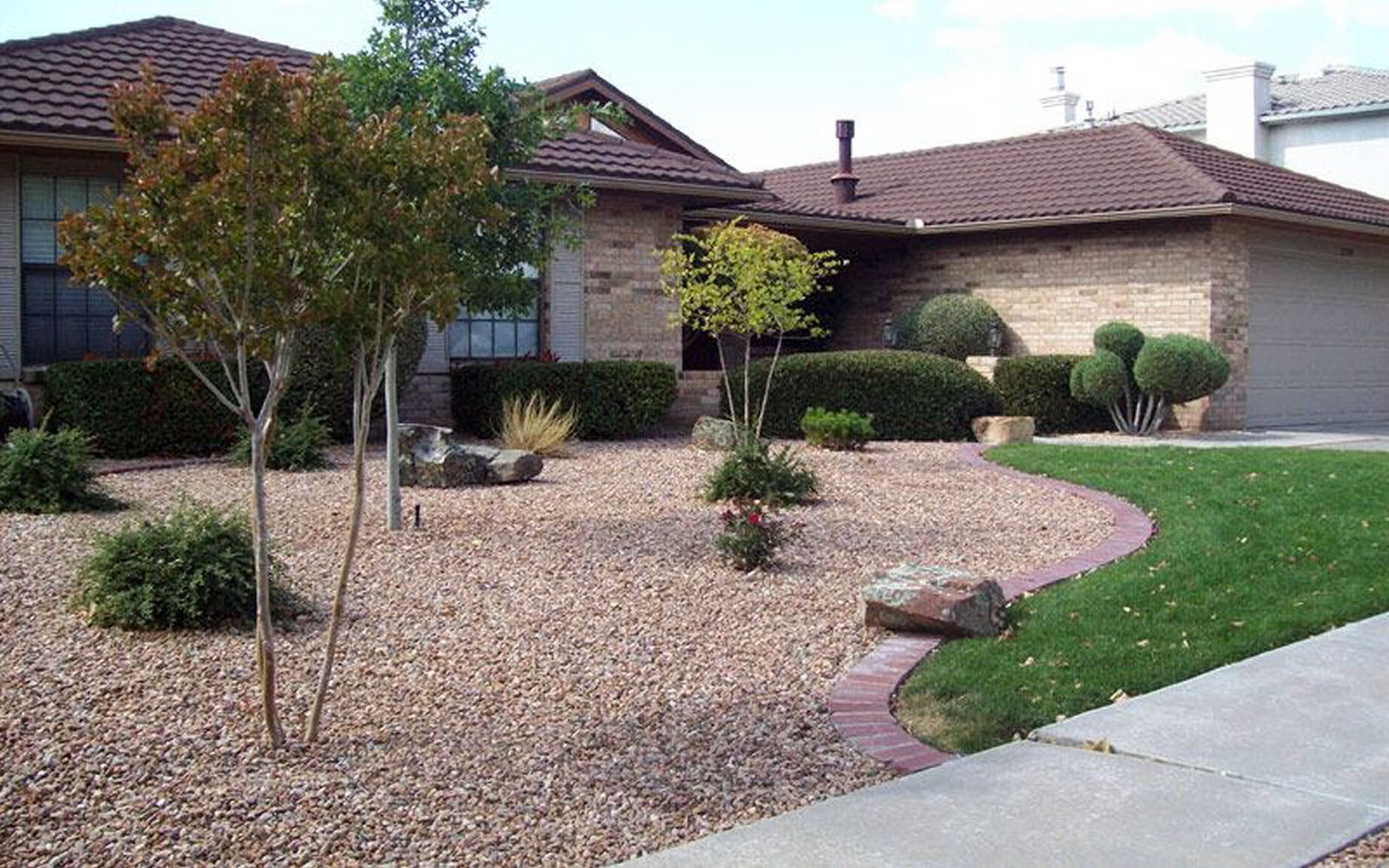
|
|
Quite often too little thought is given to the future. Trees currently watered with
the lawn will be deprived of this water. Though the watering provided for a lawn is
shallow and not good for trees, it has been a constant source of water. So, if there
is an established tree in the lawn area that will be converted to xeriscape it is
going to experience trauma.
Surrounding the existing tree with a sufficient number of new shrubs is one way to provide water to the rootzone of that tree. Of course, the plan needs to observe that these new shrubs will be taking some of that water - longer run times or additional emitters will compensate for this. |
|
Plan for the Future
Also often overlooked when doing a xeriscape, is the desire and ability to add plants
later. At first you may only want a few plants. After a year or so, you might like to
add a more plants. Without planning ahead, there may be no easy access to irrigate new
plants. Consider this when making the initial plan.
As with most projects; Good planning, brings good results.
Ask yourself a few questions. ☀ What do you want from your landscape? ☀ What limitations and what potential does it have? ☀ Are there vital roots to trees or shrubs to be preserved and irrigated? ☀ What will you need to hide or want to highlight? ☀ Do you have children or pets that need turf areas to play on? ☀ Where are the sunny and shady spots?
Measure Twice Cut Once
Plan FIRST before installing |
|
Removing the Old Turf
Once a tree is established in a lawn, removing turf can result in problems.
Make sure your trees are healthy before you start! Trees become reliant on
frequent turf watering. When grass is removed, the tree can become stressed,
and vulnerable to insects and disease. Too often, much of the tree's root system
is torn out during the lawn removal process. Sod cutters do substantial damage
to tree root systems and should be avoided in the root area.
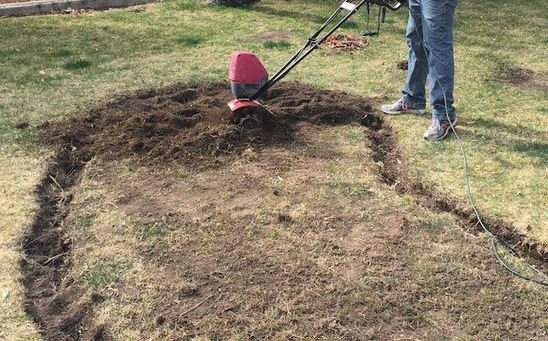
|
|
If the turf is a cool season grass like fescue, the elimination process is simple. Apply a non-selective herbicide to the foliage. This will effectively kill the weeds and turf and prevent their return. The grass to be removed can be scalped away with a tiller or a mower that can be set to soil level. |
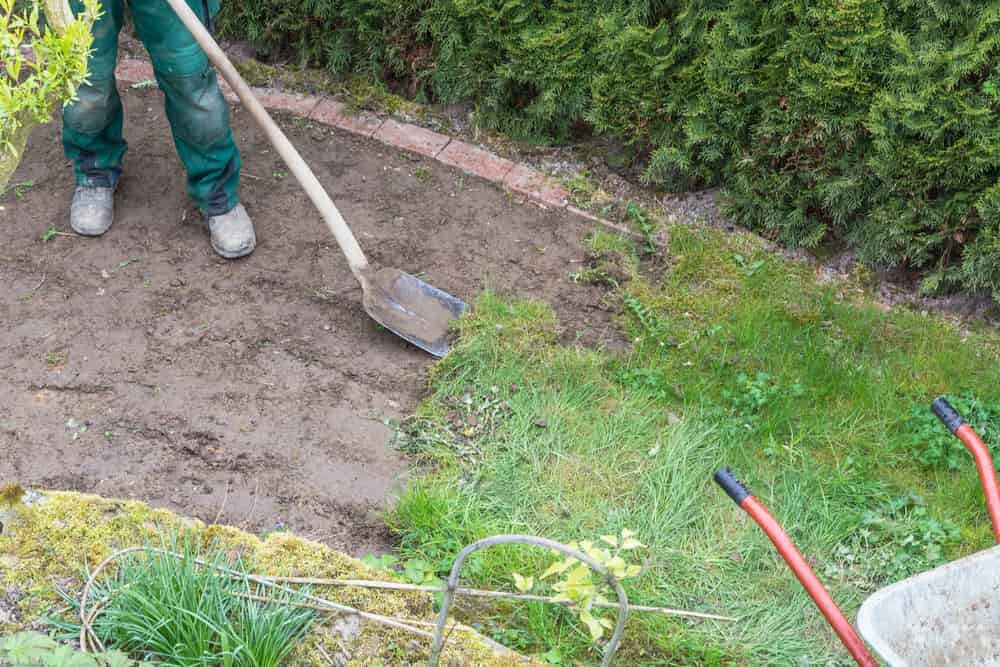
If you prefer to avoid herbicides you can use a shovel and remove the old turf as is shown above. |
|
Proper Irrigation Design Having a dead tree removed from your property is very costly. So, how can we make sure that the established tree will be able to survive and thrive in the years ahead? |
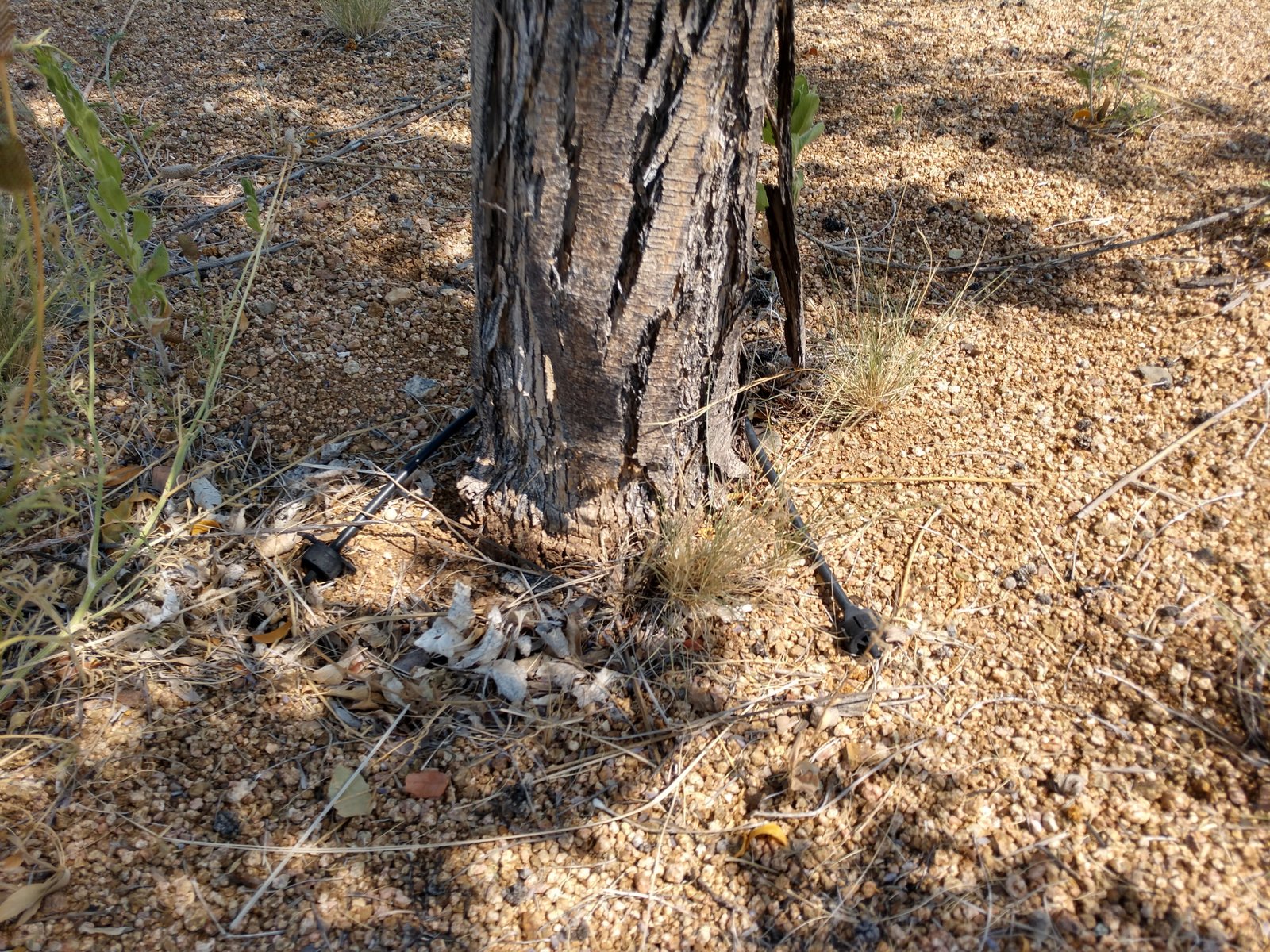
This is a poor design! |
|
Notice that there seems to be only two emitters (above) for this tree, and that these
are placed quite close to the trunk. As a tree matures the smaller feeder roots move out
towards the drip-line and away from the trunk. In this example we see two small areas of
moisture provided at a location (near to the trunk) where the tree cannot make good use.
When removing the lawn irrigation sprinklers where those parts were watering the surface for a tree, compensation needs to be made for the tree's root system. Failure to do this will result in severe decline of the tree with 3 to 6 years. |
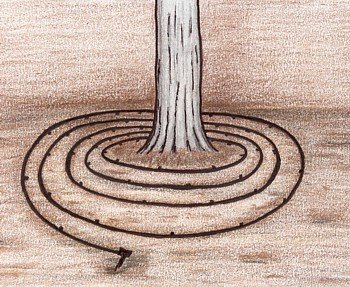
|
|
Using Dripperline (emitters spaced 12 inches throughout) is an easy way to provide deep moisture. If the tree was only provided surface water previously, the roots would actually be able to establish deeper. This deep moisture does not evaporate like surface and water efficiency is greatly improved.
Remember; If you add plants around your newly exposed tree's root system, and provide enough watering time, the drips that water these, will also water your tree. |
If you decide on individual drips, you'll need to determine how many emitters and where to place them. This can provide just as efficient irrigation as Dripperline, but the flow-rate and spacing will need to match the soil type. Make use of the Garden Calculator Pro-I for help in doing this properly.
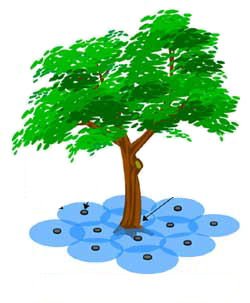
Whether using individual emitters or Dripperline, these can be placed under rock or mulch.
Depending on the PPM of solids suspended in your water, Dripperline should not clog for 10
years or more. If you'd like to have an idea if the emitters are still flowing without using
a moisture meter, plant a Bulbine (or similar non-spreading plant) where an emitter exists. If it begins to decline, you'll
want to check the emitters on the line.
Proper watering will develop deep roots and makes the plants drought tolerant. The feeder roots of a plant are typically within the top 10"of the soil, and extend to the "dripline" of the tree; An area directly below the reach of its branches. |
Now Look to the Future
Sketch your yard with existing structures, trees, shrubs and remaining grass areas.
If you were to add some plants later, where might they be? You can easily run irrigation
tubing to these areas now, and simply stub them off. This simple, easy and inexpensive
step can save you so much work later. Running new irrigation under existing rock is not my idea of fun!
|
|
Plant Selection and Layout is next
Walk the Nursery and see which drought tolerant plants appeal to you. Make a list (or photos from your cell). Bring your list and your questions into a Quality Nursery and let the Plant Specialists help you build your dream.
A well-designed Xeriscape is a beautiful and practical addition to your home. It will provide many years of low maintenance landscaping for you, and add high appeal to your neighborhood! |
|
The Garden Calculator Pro-I (a free online tool) will provide a complete and accurate
irrigation lay-out and scheduling for the landscape area under improvement.
Including everything from identifying the soil composition to emitter-count and run times,
this on-line calculator that goes with you right to the job / plant site will ask a few
simple questions and provide many specific answers and recommendations. No guesswork
involved and a complex analysis is conducted instantly.
|